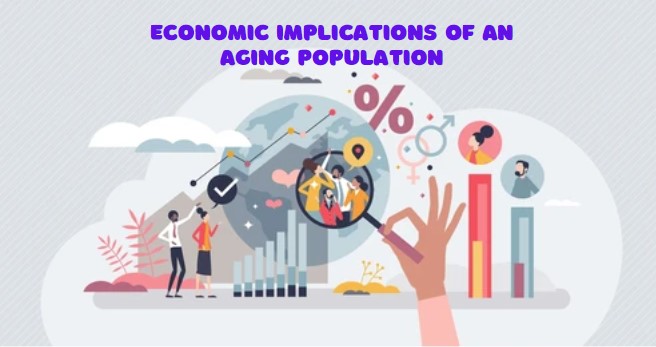The Economic Implications of an Aging Population

Introduction
An aging population refers to a demographic trend where the proportion of older individuals in a society increases, while the proportion of younger individuals decreases. This trend is caused by a combination of factors, including increased life expectancy and declining birth rates. As a result, the population of many countries is becoming increasingly older, with significant implications for the economy.
Impact on the Labor Force
One of the most significant economic implications of an aging population is the impact on the labor force. As the proportion of older individuals increases, there will be a corresponding decrease in the proportion of working-age individuals. This can lead to a decrease in the overall labor force participation rate, which can negatively impact economic growth and productivity.
Additionally, an aging population can lead to an increase in the number of older workers remaining in the labor force for longer periods of time. This can create a tension between older and younger workers for job opportunities, and can also lead to increased competition for jobs.
Impact on Public Spending
An aging population also has significant implications for public spending. As the population ages, there will be an increase in the demand for healthcare and pensions, which can put a strain on public finances. This can lead to increased public spending on healthcare and pensions, which can in turn lead to higher taxes or increased public debt.
Additionally, an aging population can also lead to an increase in the number of older individuals who require long-term care. This can further increase public spending, as the government may need to provide additional resources to support these individuals.
Impact on the Housing Market
An aging population can also have implications for the housing market. As the population ages, there will be an increase in the demand for retirement homes and assisted living facilities. This can lead to an increase in the construction of these types of facilities, as well as an increase in the prices of existing properties. Additionally, the sale of homes owned by older individuals who move into these facilities can also lead to a decrease in the overall housing supply, which can further drive up prices.
Mitigating the Negative Impact
There are several ways to mitigate the negative economic implications of an aging population. One approach is to increase labor force participation among older workers through policies such as flexible work arrangements and retraining programs. This can help to offset the decrease in the overall labor force participation rate.
Another approach is to increase the number of immigrants to a country, which can help to offset the decrease in the proportion of working-age individuals. This can help to increase the overall labor force participation rate and boost economic growth.
Additionally, governments can also implement policies to address the challenges of an aging population, such as increasing public spending on healthcare and pensions, and investing in long-term care infrastructure. This can help to ensure that older individuals have access to the resources they need to maintain a good quality of life.
Impact on Consumer Spending
An aging population can also have implications for consumer spending, which is a crucial driver of economic growth. Older individuals tend to have different spending patterns than younger individuals, and as the population ages, there may be a decrease in overall consumer spending. This can lead to a decrease in demand for certain goods and services, which can negatively impact businesses and economic growth.
Additionally, older individuals may also be more likely to save their money rather than spend it, which can lead to a decrease in overall consumption and economic growth. This can also lead to a decrease in demand for certain goods and services, which can negatively impact businesses.
Impact on GDP
An aging population can also have implications for GDP, which is the primary measure of a country’s economic performance. GDP is calculated by adding up the value of all goods and services produced within a country in a given period of time. As the population ages, there may be a decrease in the overall labor force participation rate, which can lead to a decrease in economic growth and productivity. This, in turn, can lead to a decrease in GDP.
Additionally, an aging population can also lead to an increase in public spending on healthcare and pensions, which can lead to a decrease in GDP. This is because an increase in public spending can lead to an increase in taxes or public debt, which can decrease overall economic growth.
Mitigating the Negative Impact
One way to mitigate the negative economic implications of an aging population on GDP is to increase the productivity of older workers through policies such as retraining programs and flexible work arrangements. This can help to offset the decrease in the overall labor force participation rate and increase economic growth.
Another way to mitigate the negative impact is to encourage older individuals to continue working and consuming for longer. This can be done by providing incentives for older workers to remain in the labor force, such as tax breaks or pension credits. Additionally, governments can also implement policies to encourage older individuals to spend their money, such as providing discounts or tax breaks for certain goods and services.
It is important for governments, businesses, and society as a whole to address the challenges of an aging population in order to ensure a sustainable future. This requires a comprehensive approach that includes economic, social, and demographic policies. By working together, we can ensure that older individuals have access to the resources they need to maintain a good quality of life, while also supporting economic growth.
Conclusion
In conclusion, an aging population has significant economic implications, including the impact on the labor force, public spending, housing market, consumer spending, and GDP. While there are challenges associated with an aging population, there are also ways to mitigate these challenges and ensure that older individuals have access to the resources they need to maintain a good quality of life, while also supporting economic growth. It is important for governments, businesses, and society as a whole to address the challenges of an aging population in order to ensure a sustainable future.



